For the last 30 of its 75 years, the offices of Mathematical Reviews, housing roughly 78 staff members, have been in a red-brick building at 416 Fourth Street in Ann Arbor, Michigan. This building sits at the edge of downtown Ann Arbor, in an area designated the Old West Side, with older houses and buildings, some dating from the early nineteenth century. The Mathematical Reviews building was built as a brewery in 1902. The area of the Old West Side housed many people of German descent at the time, and so beer was an important staple of life.
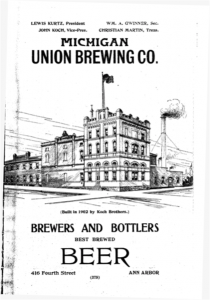 A picture from the 1903 City Guide shows an architect’s drawing of the building. Some of the features never actually existed, such as the monumental flag pole. While it looks in the picture as though the tall part of the building has three floors, there are, in fact, four. It is possible that this came about in the renovation done when the AMS purchased the building in 1983 from the University of Michigan. Mathematical Reviews moved to this building in 1984, having been located previously in two rented locations nearer the University of Michigan campus, after its 1963 move from Providence to Ann Arbor. The U of M campus sprawls over Ann Arbor, but the bulk of the U of M physical plant is on the other side of downtown Ann Arbor.
A picture from the 1903 City Guide shows an architect’s drawing of the building. Some of the features never actually existed, such as the monumental flag pole. While it looks in the picture as though the tall part of the building has three floors, there are, in fact, four. It is possible that this came about in the renovation done when the AMS purchased the building in 1983 from the University of Michigan. Mathematical Reviews moved to this building in 1984, having been located previously in two rented locations nearer the University of Michigan campus, after its 1963 move from Providence to Ann Arbor. The U of M campus sprawls over Ann Arbor, but the bulk of the U of M physical plant is on the other side of downtown Ann Arbor.
There were actually two different breweries in the building. T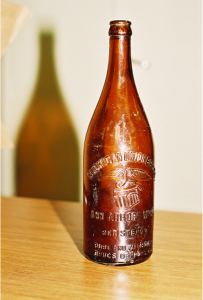 he first was called the Michigan Union Brewing Company, a name change from the Western Brewery that was, since 1861, located nearby. The new name honored the local Bartenders and Brewers Union. The distribution of beer that was not in kegs tended to be in large bottles (roughly 750 ml), such as the one in the picture. The oldest bottles had a different sort of closure system than the modern bottle cap, sometimes called a blob top by bottle collectors. Bottles after about 1910 have the encouraging phrase, Pure and Without Drugs or Poison, embossed at the bottom. This was due to an early version of the Pure Food and Drug Act.
he first was called the Michigan Union Brewing Company, a name change from the Western Brewery that was, since 1861, located nearby. The new name honored the local Bartenders and Brewers Union. The distribution of beer that was not in kegs tended to be in large bottles (roughly 750 ml), such as the one in the picture. The oldest bottles had a different sort of closure system than the modern bottle cap, sometimes called a blob top by bottle collectors. Bottles after about 1910 have the encouraging phrase, Pure and Without Drugs or Poison, embossed at the bottom. This was due to an early version of the Pure Food and Drug Act.
Prohibition ended beer production in 1918. The brewery could not survive on sales of near beer, as some breweries at the time were able to do, and the business ended. During Prohibition, the building had various tenants, including an ice cream manufacturer. At one time the basement was used to store government-purchased potatoes, and there are stories of epic potato fights involving neighborhood children.
With the end of Prohibition, the building again became a brewery, but with a new name, Ann Arbor Brewing Company, with completely new equipment, and unrelated to the former operation. Beer was now packaged in a form more recognizably modern: 12-oz. bottles with modern beverage caps, sold first in wooden crates and later in returnable cardboard case boxes. The bottling line was in an area of the building that now houses part of the Copy Editors Department.
In the early 2000’s Mathematical Reviews was given a wooden keg from the second brewery.
The time after Prohibition was an era of huge changes in the brewing industry, with the development of regional and national brands, driven by large-scale advertising and the rapid distribution required for a perishable product. A brewery of the size of Ann Arbor Brewing Company could no longer survive, and it finally closed its doors in 1949. There are intriguing (probably unverifiable) stories about possible connections to the vestiges of the Capone gang in Chicago in the final days. It would be almost 40 years until the rise of the craft beer industry made a brewery this size economically feasible again.
After the end of brewing, the building had various lives. It housed the local Culligan dealer for a time (because of the artesian well in the basement), it was part of the campus of the Argus Camera Company, and it was the media center for the university.
There is a fascinating book tells the story of brewing in the greater Detroit area: Brewed in Detroit: Breweries and Beers in 1830, by Peter H. Blum, Wayne State University Press, Detroit, 1999. More information about the breweries in the Mathematical Reviews building can be found in this book. The local monthly newspaper, The Ann Arbor Observer, featured the building in a December, 2007 article. This can be found online (except for photos that were in the print edition) at http://aaobserver.aadl.org/aaobserver/18545.
This is a guest post by Norman Richert, the Managing Editor of Mathematical Reviews. Norm likes to say that he was destined to be at Mathematical Reviews. He is a mathematician who is a true beer aficionado. Norm has researched the history of the Mathematical Reviews building, as well as the breweries that used to be here. He has a very fine collection of memorabilia from both the Michigan Union Brewing Company and the Ann Arbor Brewing Company. Norm knows a lot about the history of Ann Arbor, and about the current micro-breweries in Ann Arbor. Thank you, Norm, for writing this post.
Question: What’s the deal with the title?
Some more resources about the building and the breweries:
- A scan of an article from the old Ann Arbor News about the breweries at 416 Fourth St.
- A current beer-blogger writing about the breweries.
- Some more pictures of bottles.
You can also find out more about the history of Mathematical Reviews here.
Here are some current pictures of the Mathematical Reviews building.

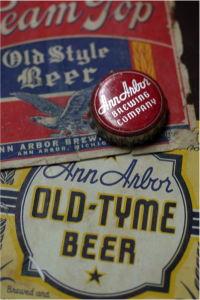
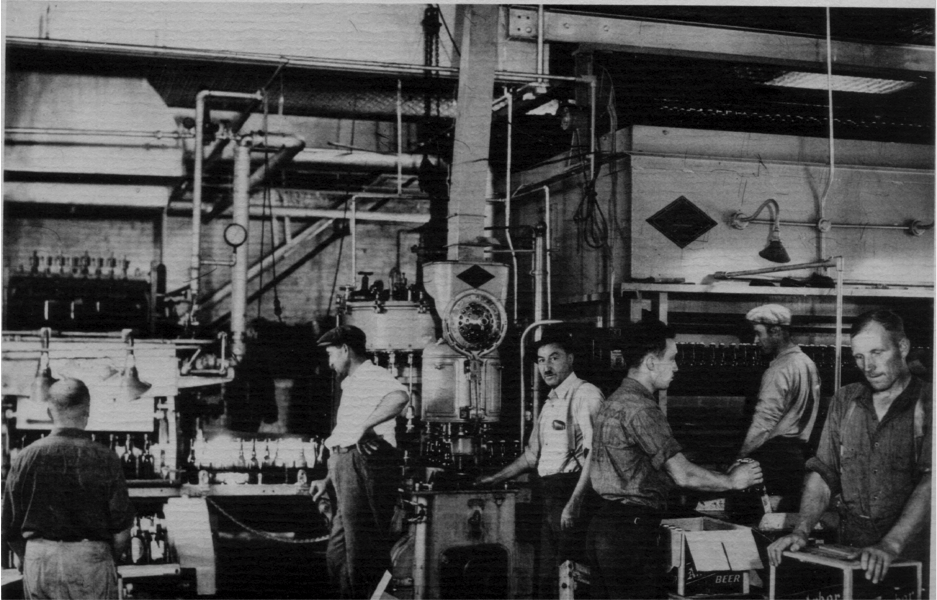
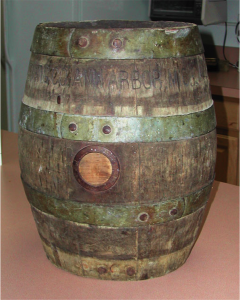
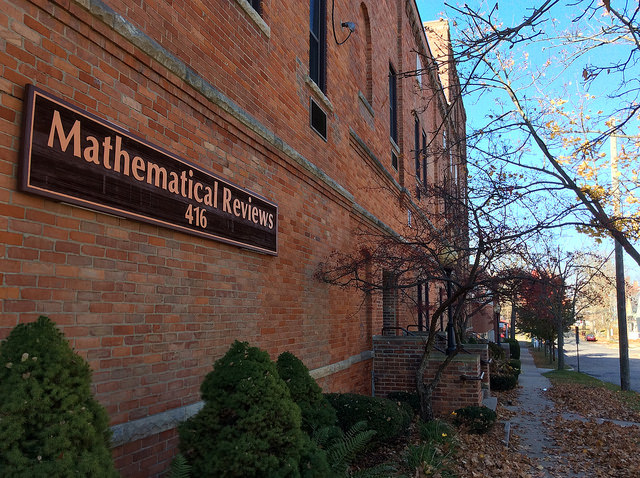
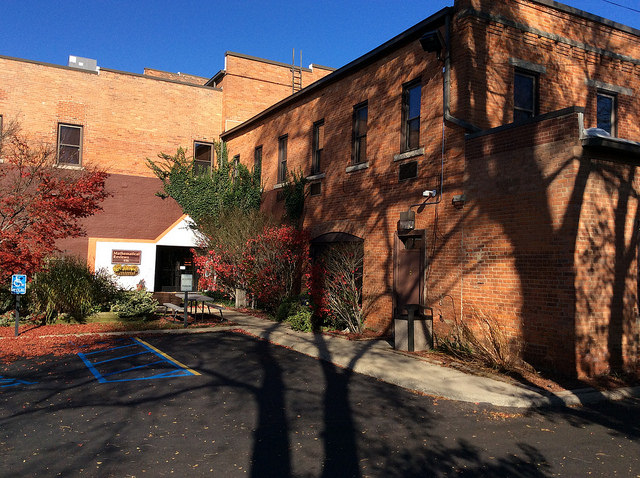
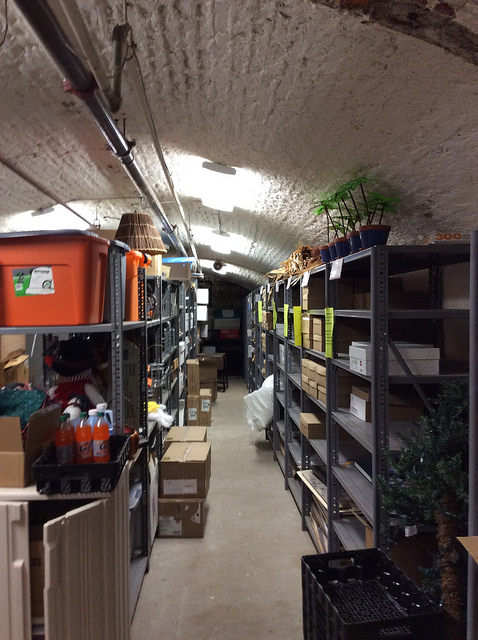
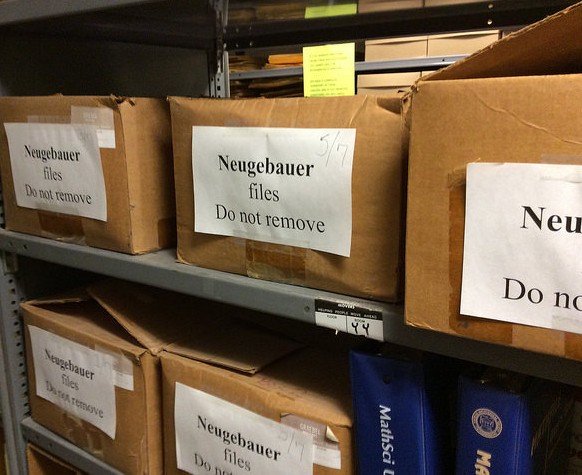
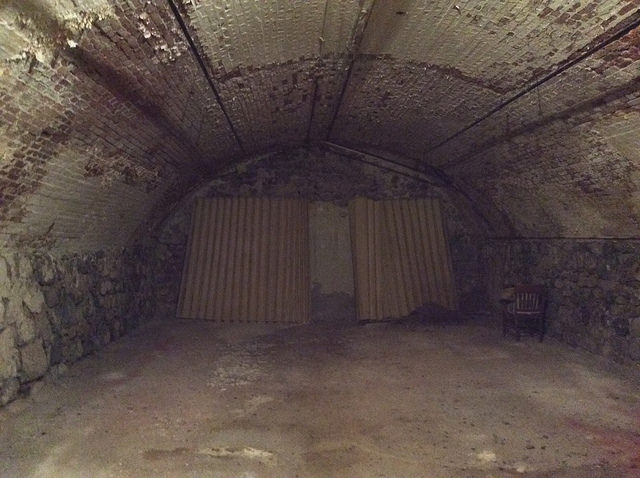
An interesting historical account of Mathematical Reviews. Thanks Ed and Norm.
Steve Damelin.
That is a nice post. As for the title, I’m thinking it’s “a rag man.”